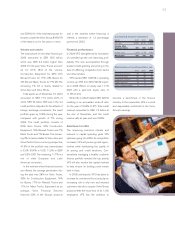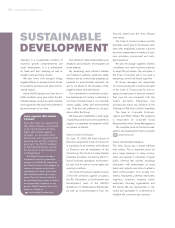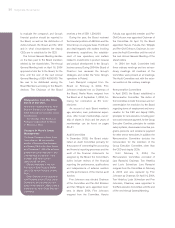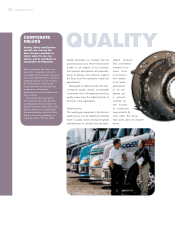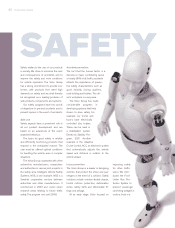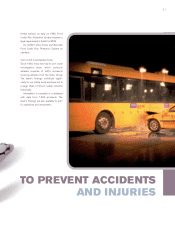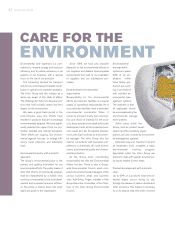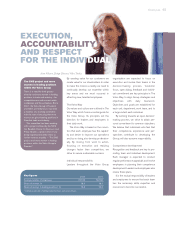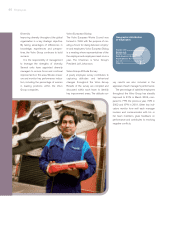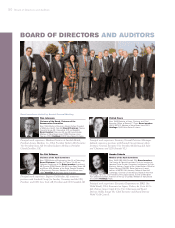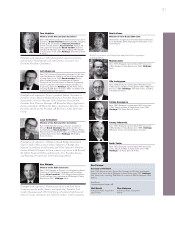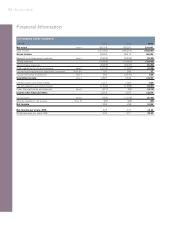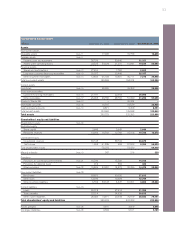Volvo 2004 Annual Report Download - page 45
Download and view the complete annual report
Please find page 45 of the 2004 Volvo annual report below. You can navigate through the pages in the report by either clicking on the pages listed below, or by using the keyword search tool below to find specific information within the annual report.
to the environmental impact of products
and operations. We do this by using life-
cycle analysis with a focus on a product’s
complete life cycle, from raw
materials to waste products.
Since the
fundamental princi-
ple is that every new product should
have a lower environmental impact than
the one it is replacing, environmental
demands are placed on the development
of new products. Engineers test various
materials, designs and manufacturing
processes in order to determine what has
the least impact on the environment.
43
Environmental improvement and
utilization
Improved fuel efficiency results in lower
costs for our customers and is an effect-
ive way to reduce emissions of carbon
dioxide. In order to improve air quality,
regulators in many countries are placing
even more stringent requirements on
reducing emissions, especially of nitro-
gen oxides and particulates
In order to meet these demands, we
are continuously developing new
engine technologies that reduce fuel
consumption and emissions. The harm-
ful substances in emissions have been
reduced by up to 85% over the past
twenty years. Fuel consumption and
carbon dioxide emissions have been cut
by 30% over the same period.
Our products use primarily diesel
engines, due to their energy efficiency
and their potential for extremely low
emissions. While the primary focus is on
developing diesel engines, Volvo has also
made significant strides in the areas of
alternative engine types and fuels. In the
long term, we regard dimethylether as a
possible fuel alternative. It can be used in
the diesel process, has a high level of effi-
ciency and can be produced from renew-
able raw materials.
Our products are largely recyclable.
For example, as much as 96% of a truck
can be recycled.
Volvo’s Environment Prize
goes to urbanization experts
The 2004 Volvo Environment Prize
was awarded to four of the world’s
foremost experts on urbanization
issues: David Satterthwaite from the
UK, Jaime Lerner from Brazil, and the
husband and wife team Mario and
Luisa Molina from the US.
The year 2004 marked the first
time in the history of the world when
more people lived in cities than in
rural areas. Nevertheless, researchers
believe that the growing problem of
overpopulation and its associated ills,
air pollution and transportation prob-
lems, is solvable. While not overlook-
ing their environmental impact, the
prizewinners consider roads, railways
and air transportation to be important
prerequisites for economic develop-
ment and social harmony.
Volvo’s Environment Prize was
founded in 1989 as a way to empha-
size Volvo’s involvement in issues
relating to environmental research
and sustainable development. The
prize amount is SEK 1.5 M.
More information about Volvo’s
Environment Prize is available at
www.environment-prize.com
➡
INCREASED
ENERGY EFFICIENCY
AND LOWER EMISSIONS


